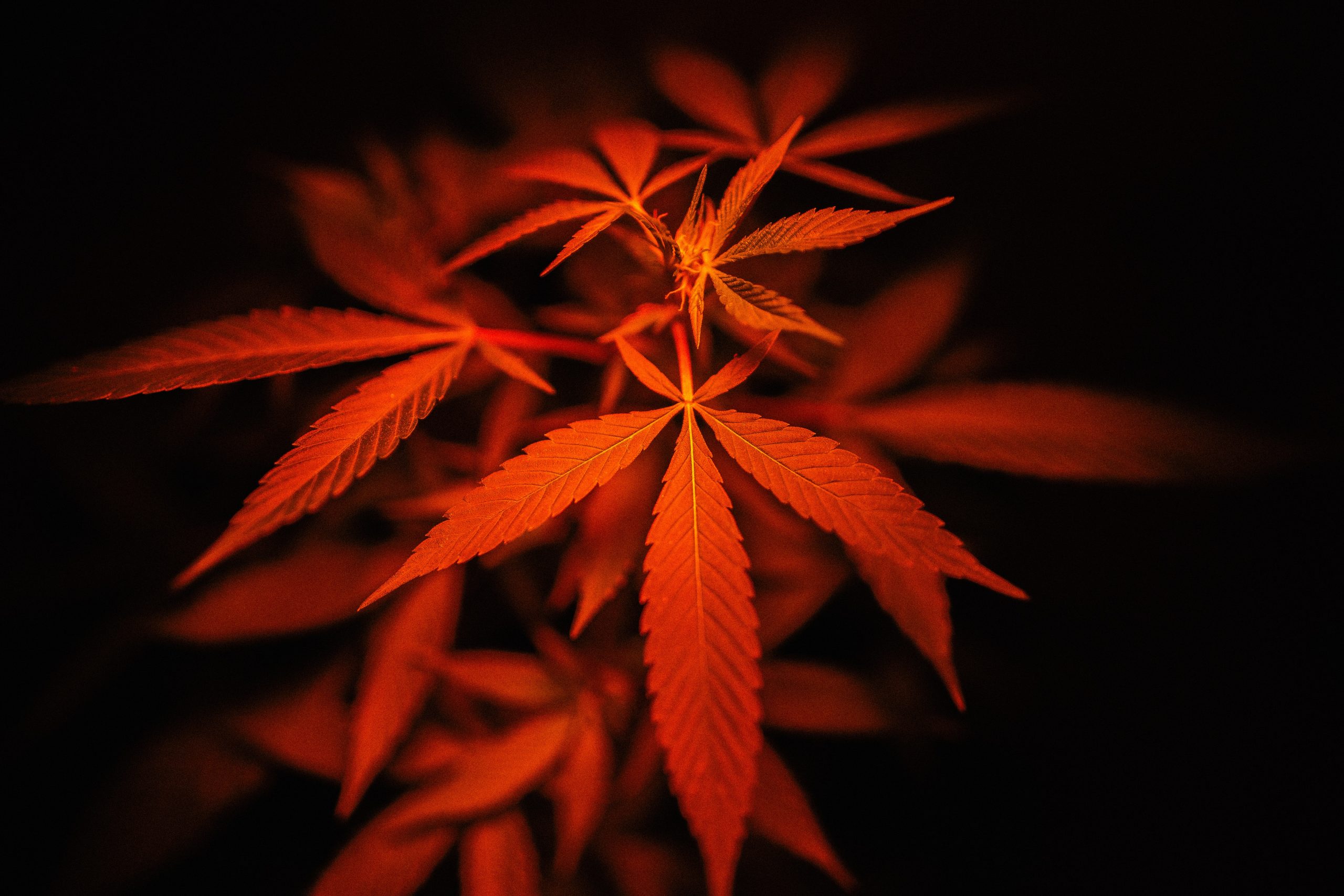
On November 3rd, South Dakota became the 15th state to legalize cannabis for recreational use. South Dakota made history by going from the complete prohibition to the total legalization of cannabis.
Currently, 15 states and the District of Columbia have fully legalized cannabis and an additional 16 states have decriminalized it. But, what is the difference between legalization and decriminalization? Is one preferable to the other? Is decriminalization dangerous? Let’s look at what constitutes each and find out.
Decriminalization
Understanding the difference between cannabis decriminalization and legalization is crucial as President elect Joe Biden and Vice President elect, Kamala Harris, stated their support for decriminalization according to  Marijuana Moment.
Marijuana Moment.
Decriminalization usually precedes legalization. A state often decriminalizes cannabis for the intent of keeping it illegal while eliminating jail time as a penalty. Instead, the penalty for possession is often a fine. This is confusing as possession and use of cannabis is still prohibited by law. However, perpetrators are virtually protected from criminal prosecution under decriminalization.
If caught with a small amount of cannabis, decriminalized states treat this as a minor traffic violation.
Conversely, selling or possessing large quantities of cannabis is still against the law and therefore liable to prosecution. The latter is considered possession with intent to distribute — a completely different offense than possession in small quantities.
A study on public health concerns surrounding legalization suggested that many supported it in an effort to reduce prison populations and crime rates. However, this same study also shows that legalization correlated with an increase in homicide rates and hate crimes. Subsequently, cannabis’ legalization caused an increase in demand, leading to increased availability and lower costs. Decriminalization may be a good alternative to legalization by decreasing prison populations while possibly avoiding some of the negative correlations mentioned.
However, while most don’t consider cannabis decriminalization dangerous, there’s concern over underage usage.
A study from the National Institutes of Health (NIH) reports that cannabis arrests involving underage youth decreased in legal states. But these arrest rates still contribute to a large amount of cannabis arrests.
In legal states, arrests among adults decreased more than those among youths. Implying that decriminalization might lower youth arrests more than legalization, the study states, “Decriminalizing marijuana and reducing penalties for underage youth would help reduce marijuana arrests.”
Legalization
Legalization changes the status of cannabis from illegal to legal. However, this process varies from state to state. In 15 states, cannabis is legal for medicinal and recreational use for adults age 21 and older.
In another 20 states, cannabis is completely legal for medical use. 13 of these 20 states have decriminalized cannabis. Again, this can be a bit confusing. According to the Marijuana Policy Project (MPP), medical cannabis is legal in these states, and for the sake of understanding, possessing small amounts of it for recreational use is a fineable offense.
Cannabis is legal for medicinal purposes in additional 13 states, but there is a limit on the amount of THC that can be used. Two of these 13 states — North Carolina and Virginia — have decriminalized cannabis.
This leaves only two states, Idaho and Nebraska, where no legalization legislation has passed. However, Nebraska has decriminalized cannabis. Thus, Idaho is the only state which completely prohibits any possession or use of cannabis.
The Legality of THC

Just as we have seen states overturn federal law prohibiting the use of CBD, we see the same with THC. It should be noted that hemp is completely legal to use and grow in the U.S. Although CBD and THC are derivatives of hemp, the laws on how much THC concentration is legal remain murky.
According to Vape Fuse, the U.S. Food and Drug Administration (FDA) has determined that products with a concentration of under .3% THC are legal for “educational and academic purposes.”
In essence, the entire process of legalization begins with decriminalization and progresses towards legalization in an effort to circumvent federal policy. THC and high THC concentration products are simply going through this journey more slowly than CBD products.
Ultimately, it is likely THC will follow the same path to legalization that CBD has.
By Thomas O’Connor
Kamala Harris and Jerry Nadler Introduce Federal Decriminalization Bill



What about ANOTHER BOGO which could b HUGE 🙂
This time it would be
BUY ONE GET CONGRESS OFF OF SYNTHETIC DRUGS
or
BUY ONE GET CONGRESS “CHEMICAL FREE” 🙂
PLEASE imagine, if, for example,
EVERY PERSON in California STARTED to PARTICIPATE
and the MILLIONS OF CANNABIS,HEMP, and WEED products
that would be SENT to EVERY POLITICIANS’ LOCAL OFFICE in the State 🙂
PLEASE imagine if the
BUY ONE GET CONGRESS OFF OF DRUGS
could be done ACROSS THE USA and
all the FEDS and the state politicians
WOULD BE FORCED TO GET THESE PRODUCTS to
military vets,
synthetic drug addicts and
Autism patients
because they CANNOT BE THROWN OUT 🙂
BUY ONE GET CONGRESS OFF OF SYNTHETIC DRUGS
could be a sale that gets so much PR that
the FEDS cannot continue to hide behind their ridiculous
SCHEDULE maneuvering because
We the Patients know that
“Drug Schedule” MEANS “DRUG ADDICTION” 🙂
IF the politicians continue to BE ANTI-CONSTITUTIONAL
by taking away OUR PLANT then
We the Patients can WIN with TITRATION MARKETING and
BOGO SALES which HELP POLITICIANS’ and POLITICIANS’ FAMILIES health 🙂
If the MSOs refuse to help and are loyal to the politicians
then we BOYCOTT the MSOs OUT OF BUSINESS 🙂
Shall we look through the lens of We the Patients
at the Presidential candidates 🙂
Even perhaps the Democrats
(they were WARNED)
all realize that Biden and Harris ARE,
As ADVERTISED and As CAUTIONED,
DRUG WARRIORS
so if 70% of the USA would like ACTUAL legalization
and NOT more REGULATED Prohibition
then Biden has ZERO CHANCE 🙁
DeSantis also has ZERO CHANCE because
PLEASE LOOK at his DREADFUL FL cannabis program
where possessing MORE THAN 20 grams is a
FELONY – A FELONY – A FELONY
which means quite definitively that Ron is NOT a CONSTITUTIONALIST 🙁
It doesn’t take long to see his
Harvard Eugenics University/Pilgrim society/City of London
AND
“Yalies” Skull & Bones CIA background and
having MORE THAN 20 grams of reefer is a FELONY in FL –
A FELONY for 3/4 of an ounce;
all the while, the “informal” market participants in FL are succeeding
and more chemical farming MONOCROPPING of citrus and other CASH CROPS
dumps chemicals into the ocean which causes RED TIDE =
A FAILING GRADE for the FL Governor for
Growing food as medicine and Growing plants as medicine
WITHOUT SATANIC CHEMICALS 🙁
The Democrats are CLEARLY AGAINST cannabis –
PLEASE VIEW how they let their colleague FETTERMAN
twist in the wind instead of giving him WHOLE PLANT BOTANICAL medicines
to resolve his stroke and depression –
so NONE of them
(probably not even RFK jr.)
and NONE of the republicans 🙁
It is a almost unbelievable situation We the Patients are in that Trump is
the ONLY candidate NOT against reefer
and he spoke recently that he is against GMO CANNABIS which is
SWEET music because it is ANTI GMO which is awesome
and it doesn’t mimic the NY Times and Psychology Today
REEFER MADNESS formatting and
specifically singles out the GMO seeds but
NOT the Constitutional seeds 🙂
However, IF there are candidates that want to WIN,
then those candidates merely have to be
FULL THROTTLE moving forward with the HEMP ECONOMY and
We the Patients know that we’ll get medicinal THC back in the process because
there will be plants growing from sea to shiny sea 🙂
Please don’t vote for DRUG WARRIORS this time regardless of party
and please vote for the candidates who will give us OUR PLANT back
and the Hemp Economy
(which resolves hopefully all or nearly all of the Baby Boomer’s/Our evil exploitation of human and natural resources = Hemp brings REDEMPTION) 🙂
Electric cars and synthetic drugs, no thank you 🙂
Hemp cars and Whole plant botanical medicines, yes please 🙂
“Chemical free” Cannabis, Hemp, and Weed = Titration Marketing will WIN 🙂
Cannabis is medicine for ALL POOR people of ALL SKIN PIGMENTATIONS 🙂
NO LEGAL WEED IN USA; ONLY regulated weed 🙁
The Democrats are TOTALLY SCREWED because everyone can see FETTERMAN: poor guy PUT IN THE HOURS to talk to PATIENTS in PA, they get the cannabis program, and NOW FETTERMAN is MASSIVELY IN NEED of Cannabis/Hemp Wellness products to recover from his STROKE and DEPRESSION and NO ONE IN HIS PARTY is CARING FOR HIM, and NONE of the Patients in PA are helping him and NO ONE in Congress to get FETTERMAN any WHOLE PLANT botanical medicines inclusive but not limited to cannabis/hemp = EVERYONE CAN FETTERMAN and We the Patients CAN SEE that THE FEDS DO NOT WANT TO HELP CANNABIS PATIENTS – JUST PLEASE LOOK AT how FETTERMAN is being left by everyone to twist in the wind = the FEDS do not care about cannabis and We the Patients 🙁
Why won’t Cannabis Patients help Fetterman :’-(
It shows that the DEMS do not care about cannabis as a medicine :’-(
Other members of the FEDS don’t seem to care about helping Fetterman with botanical medicines either 🙁
NONE of the FEDS or presidential candidates CARE ABOUT CANNABIS and Fetterman NOT BEING CARE FOR is the evidence and it is horrible 🙁